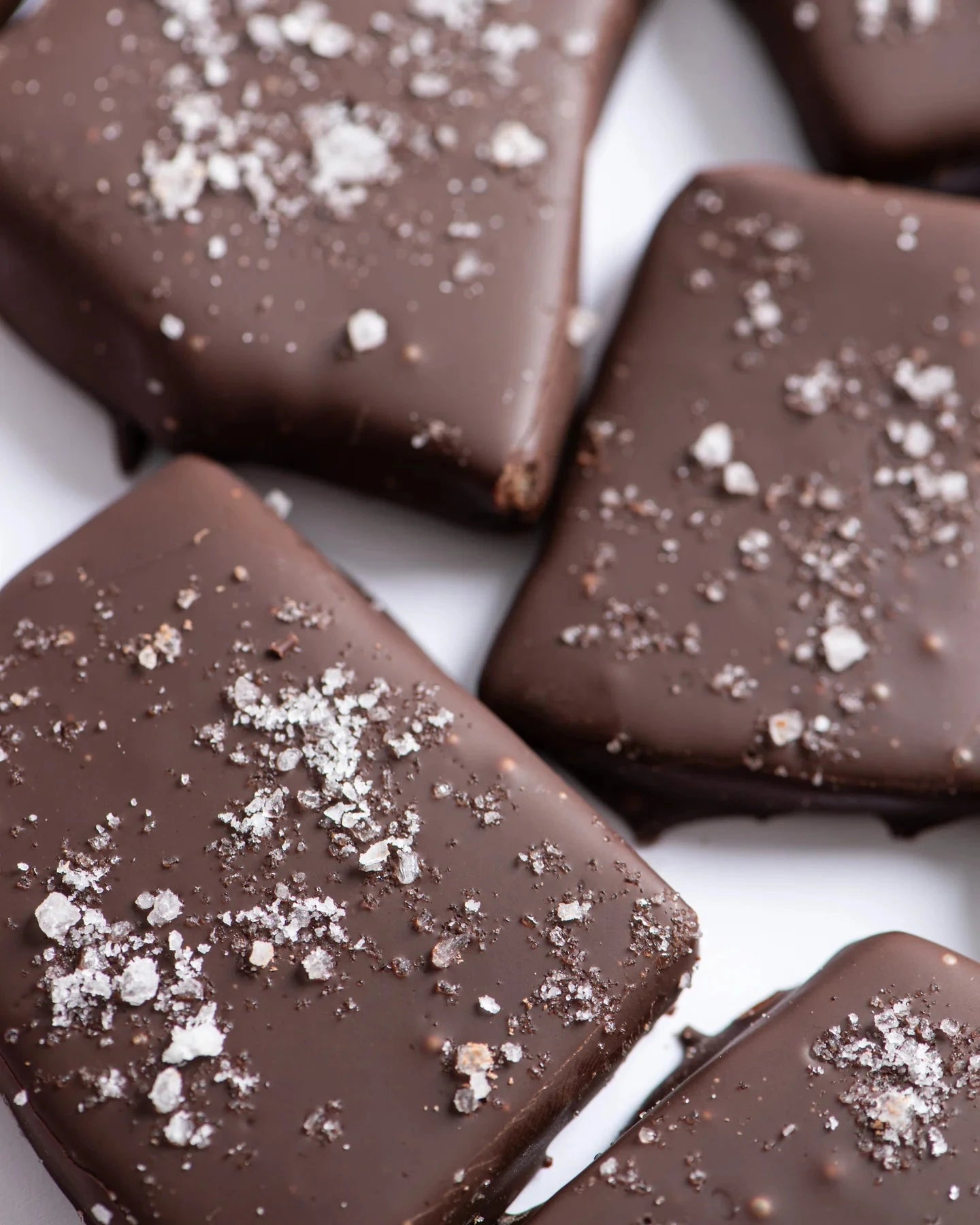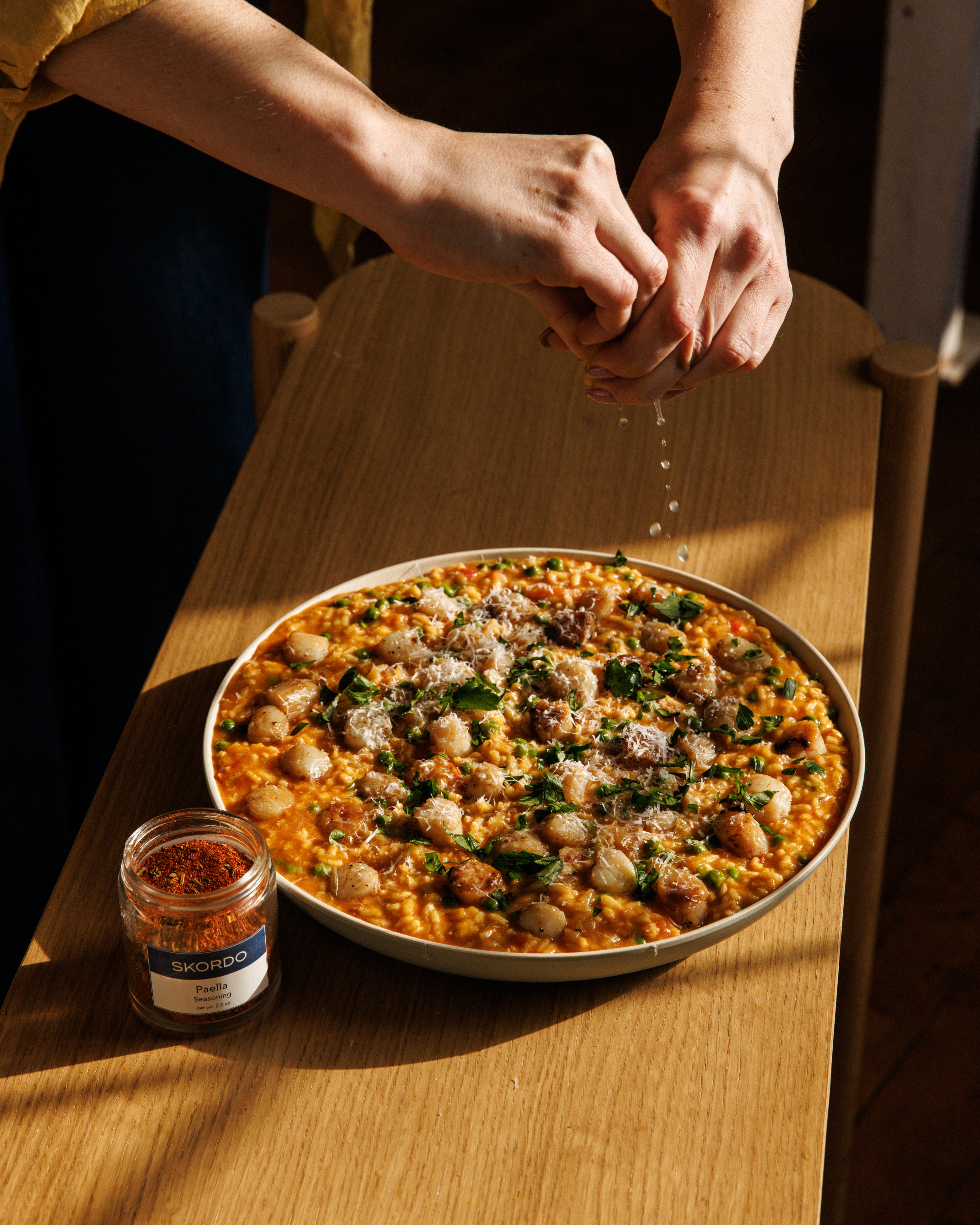First and foremost, can we talk about how beautiful the cover of this book is?! Lior Lev Sercarz does another fantastic job of bringing staples of a worldly cuisine to our hands with A Middle Eastern Pantry. I found it easy to cook recipes from this book when a majority of them use the same ingredients that I already have on hand from another and he does a great job of dividing the book into chapters based on pantry categories.
The intro covers preservation methods, information about the region and cuisine, as well as spice blend recipes to set you up for success throughout! If flavors like sesame and nuts, olives and pickles, dried fruit and molasses, flowers and honey are of interest or intrigue to you, Lior provides a wide range of dishes for the palette!
First up, I tried the Siniya dish. This dish included three of my favorite things: fennel, tahini, and cilantro, so naturally I was attracted to it! Lior’s version of Siniya uses cod while he mentions the traditional dish uses lamb, beef, or vegetables. One thing I loved about this dish is that it was creamy without using cream; the tahini and the sautéed fennel and onions create the perfect richness . I love recipes that cook fennel to a point where it is so tender and sweet that anyone with an aversion to the vegetable won’t mind. The cod is then cooked on top of the fennel and onions and a tahini sauce with cilantro adds a boost of flavor. Lior tops the dish with pine nuts and when you get a bite with some on there, it adds a little extra nutty flavor that elevates any mouthful! This dish will definitely be on repeat in my house. For a side I made some basmati rice and seasoned it a bit. I looked at the other spices that Lior works with and earthy dukkah was one of them. I thought it would be a good compliment to the main dish so I sprinkled a little SKORDO Dukkah blend in and a squeeze of lemon juice.

Next up I wanted to try one of the drinks Lior offers in this book. I opted for the Honey Sekanjabin (Vinegar Drink), which you can make as is or add vodka in the last step for a cocktail. I was intrigued by this for a couple reasons:
1. It looked good and green!
2. I was interested in the idea of a ‘vinegar’ drink with honey in the name.
3. It included cucumbers, lime and mint which in my mind is a great combination for anything refreshing!

Lior mentions right off the bat that “if you’re skeptical of vinegar as a drink ingredient, this recipe will convert you”, and it did! To be honest, I hardly tasted the vinegar at all and I find this a sweet drink more than anything. Don’t let the green color fool you either, the honey seems to be the star with accents of cucumber and lime coming through at the end of each sip. My own preference is this drink as a cocktail, I think the vodka helps balance out the sweetness a little more. The juices will separate quickly after pouring into a glass, so I found a straw helpful to keep up mixing while sipping.
Next I opted for a couple small dishes: the Sumac Onion Salad and the Olive Spread. For the onion salad, I used SKORDO’s Sumac. Raw onion salad may throw some off, but Lior instructs to soak the red onion slices for an hour to help crisp them up prior to dressing, which also helps take away the bite that we have come to know from raw red onion. It is then dressed with a combination of extra virgin olive oil, lemon juice, pomegranate molasses, sumac, salt and pepper, and topped with fresh parsley and pomegranate arils. It would be a great intro or side to any Middle Eastern inspired meal. I loved this small dish and even my two year old kept asking for another bite! The Olive Spread was one of the most interesting olive spreads I’ve made because it included dried rose petals (I used SKORDO’s Rosebuds and Petals), pomegranate molasses and rose water. The recipe combined those ingredients with green olives (avoid buttery ones here), pistachios, garlic, and shallot. It was topped with more dried rose petals and pomegranate arils. I found the rose flavor between the petals and water to be very prevalent, and it is a particular flavor so if you are unsure I would suggest adding the rose water to taste. It was my first time using dried rose petals and rose water in this kind of dish but I enjoyed it and ate it with crackers! Lior also suggests fresh bread, on top of grilled fish, or a seasoning paste on a rack of lamb.


While a couple other main dishes were calling my name in here (the Salt Cod and Green Olive Stew which I will be making and the Fesenjan that was recommended by a coworker), I opted to challenge myself with a protein I’m not familiar with cooking - lamb. While the Pomegranate Roasted Leg of Lamb was intriguing, I knew cooking with a toddler at home would mean I needed something fun and quick, so Baharat Lamb Keftas it was! What I loved about the keftas was that they combined ground lamb with black olives and feta. I found these other flavors, plus sweet spices in the baharat seasoning (I used the recipe for the blend that Lior provides in the beginning of the book), helped to mellow the gamey flavor lamb sometimes carries. If you’re interested in trying lamb for the first time, this is a great recipe to try! The recipe also calls for Urfa chile, and I used SKORDO’s Urfa Biber. We served ours with a red pepper and tomato sauce for dipping.

Last up, I wanted to go with a classic dish that I’ve always associated with Middle Eastern cuisine, Mujadara. This is a rice and lentil dish that incorporates citrus, raisins and warming spices of coriander, cumin and cinnamon. Lior suggests topping it with fried shallots (store bought or reserved onions from a previous part of the recipe) and a spoonful of labne (I found a garlic labne in the grocery store that added nice extra flavor!) This dish would make a great side to any of the main dishes throughout this book.

Overall, I looked for a balance of recipes types to try for this review but there are so many more I’m going to be taking a shot at! Lior also provides a handful of bread recipes that would accompany many of these recipes beautifully. If you are interested in Middle Eastern cuisine, this book may easily become a staple in your kitchen. Cheers!





